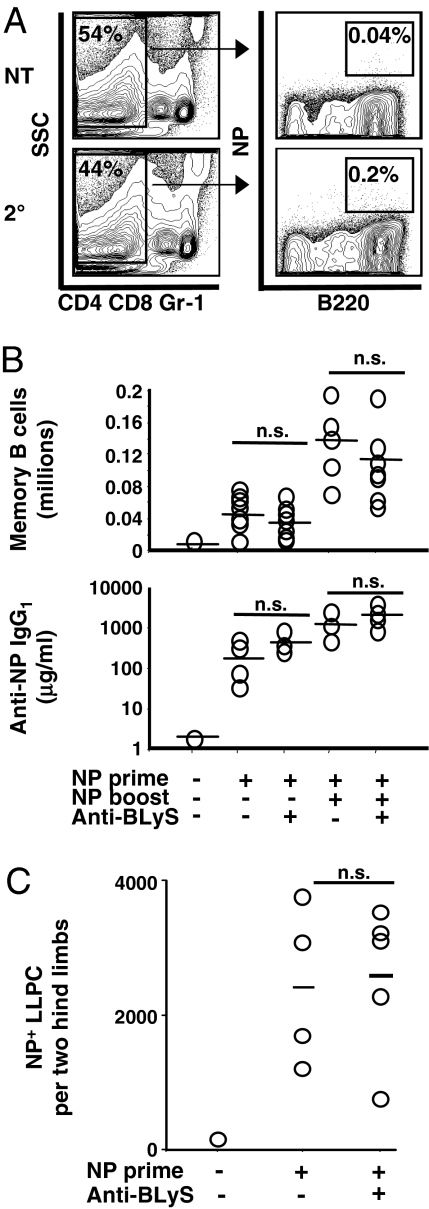Fig. 3.
BLyS ablation does not alter NP-reactive memory B cells or LLPC generated in wild-type mice (Memory System 1). (A and B) Memory B cell analysis of C57BL/6 mice immunized with NP-CGG. Primary immunization was at day 0, anti-BLyS treatment was at day 56, and NP booster immunization was at day 77. Memory B cell numbers and IgG titers were assessed at day 84 for all mice including untreated and primed-only controls. NP-reactive memory B cells were identified according to the FACS gating scheme shown in A. After doublet discrimination, DAPI exclusion, and lymphocyte gating, memory B cells were phenotyped as CD4−CD8−Gr-1−B220+NP+. NT, not treated control. NP-reactive memory B cell numbers and high-affinity anti-NP IgG1 antibody titers, as assessed by ELISA, are shown in B. Each symbol in graphs represents an individual mouse, black lines represent means, and combined results from two separate experiments are shown. Symbols at the bottom indicate treatment given (+) or not given (−). (C) Number of NP-specific LLPC in the bone marrow of control mice or anti-BLyS-treated mice at 21 days after anti-BLyS treatment and 77 days after NP-CGG immunization. Phenotyping strategy for LLPC is presented in Fig. S4.

